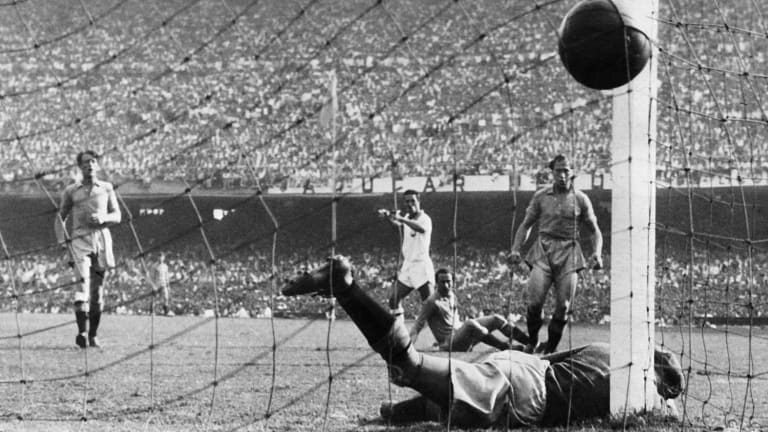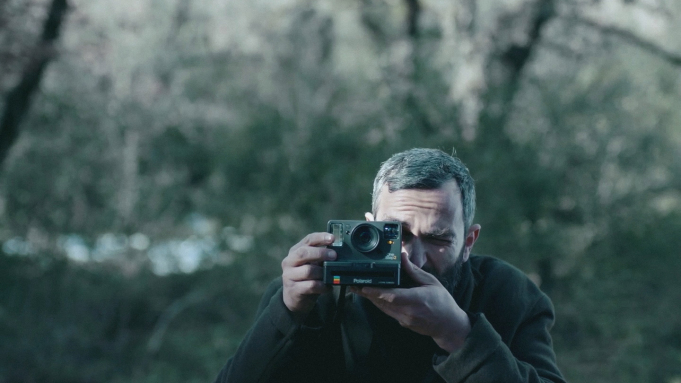As of 9 July 2021, ten years after independence, South Sudan lies in ruins. A civil war that began in 2013 has razed many of the country’s cities, displaced millions, and left entire regions at the edge of starvation. A peace deal, signed in September 2018, only succeeded in returning the main belligerent parties to Juba, the country’s capital. From their perches in a transitional government, the commanders who waged the last civil war continue to clash across the country. What a difference a name makes. Hostilities are now depoliticized as disarmament campaigns or else dismissed as ethnic violence by the billion-dollar UN mission. The UN is keen to cling onto a narrative that sees the peace agreement as a success, despite the fact that its own agencies have found that the level of violence in the country has increased since 2018. It insists that there has been a reduction in ‘political violence’, points to regrettable inter-ethnic conflicts, and suggests that it is the government’s responsibility to police them. Whenever researchers point out the involvement of national politicians in the supposedly local violence scarring South Sudan, the UN plays a credible Captain Renault at Rick’s, announces its shock, and redoubles its support for the government.
This was not the plan. A decade earlier, on 9 July 2011, dignitaries visited Juba to congratulate themselves on the creation of the world’s newest state. This despite the fact that South Sudan’s new ruling party, the Sudan People’s Liberation Movement (SPLM), had fought a twenty-two-year-long civil war against the Sudanese government in Khartoum, and that it was the southern Sudanese who had voted to secede from their northern neighbour. For the Americans, British, and Norwegians involved in the peace agreement that ended the civil war, South Sudan was their baby. A World Bank report written shortly before independence brought these neonatal fantasies to their colonial apotheosis, hailing South Sudan as a tabula rasa. There are no roads, no markets, and no institutions, the report stated, and, as the consultants’ eyes gleamed, added: they will need to be created. For the internationals who thronged through Juba’s airport, eager to build a new nation, that South Sudan was terra nullius obviated any need to learn something about the country. Cookie-cutter approaches to statehood and simplistic tales about a victimized Christian south, now free of the yoke of the northern Islamic oppressor, were more functional than a real understanding of the region’s history. A state needed to be built, consequences be damned.
The SPLM’s leadership profited from international ignorance. An enduring aspect of the SPLM’s story is its ability to turn the – often simplistic, if not simply racist – tales outsiders tell about southern Sudan to its own ends. It is equally adept at manufacturing stories destined for external consumption. The SPLM’s first leader, John Garang, was a master in this regard. A charismatic politician with a PhD from Iowa State, Garang started the SPLM in 1983 with a plea for revolution in Khartoum. (Southern independence, diplomatically a lower-hanging fruit, emerged as a goal in part thanks to American pressure.) The incoherence of Garang’s later statements was not the result of insufficient hours in the library, but an appreciation of discordance as a diplomatic tool of the trade. Rebel movements in Sudan have always been reliant on manipulating external supporters. Garang could appear Marxist to the SPLM’s Ethiopian backers and then, following tectonic regional shifts and the collapse of the Derg regime in Addis Ababa, miraculously become the paragon of national self-determination that his American cheerleaders wished him to be. He died in a helicopter crash just after America forced Khartoum to sign a peace agreement in 2005. Amid the disasters of the Middle East, this was to be an easy American foreign policy win. The agreement guaranteed southern Sudan six years of self-rule and a referendum on secession in 2011. Salva Kiir, Garang’s successor, inherited none of his charisma, but all of his ability to manipulate self-regarding foreigners. From 2005–11, as oil revenues and donor funds flowed into the south, Kiir cultivated adoring foreign state-builders, eager to see their dreams of a new nation-state play out. He got into the act himself shortly after independence. South Sudan, he claimed: it’s a tabula rasa!
It wasn’t, of course. Britain took thirty years to pacify southern Sudan, principally via indirect rule, as it classified the region’s many groups according to ethnicity, while setting them against each other. At independence in 1956, northern Sudan, more urbanized, and putatively Arab, was ready to continue British policies, and use the south as a backyard from which resources and labour could be extracted. Sudan’s first civil war (1955–72) had begun the year before independence, pitting the northern elite against the marginalized peripheries of the country. The war ended with socialist dreams of development in the south, aspirations that died when the financial crises of the 1970s hit Sudan, and Khartoum collapsed under its debt burden. The second civil war (1983–2005) began soon after. According to the just-so stories pedalled at South Sudanese independence, the war pitted the northern Sudanese state against rebel groups in the south. In reality, the north borrowed a trick from the British, and set southern populations against each other in violent ethnicized conflicts. For Khartoum, this was war on the cheap. Oil had been discovered in southern Sudan in the late 70s, and the north sponsored militia forces under the command of Paulino Matip to fight the SPLM and clear populations from around the oil wells. Elsewhere, multiple militia groups emerged, frequently changing sides, as they manipulated the winds of regional favour. From the outside, this looked like an intense case of divide-and-rule, the north setting southern groups against each other. Inside southern Sudan, if it’s true that Khartoum manipulated southern commanders, those same commanders also used regional support to build up their own personal empires, transforming the social structure of the region.
Whether commanders were cadres from South Sudan’s largest ethnic group, the Dinka, loyal to the SPLA (the militarized wing of the SPLM), or members of Matip’s militias, largely drawn from the Nuer, the second largest ethnic group in the country, they used weapons from external backers to manipulate humanitarian aid, control cattle and grain markets, and position themselves atop a war economy. Endowed with weapons, they predated on local populations, enriching themselves at the cost of South Sudan’s farmers and pastoralists. Geopolitically dependent on external forces, fighting against each other, these commanders were nonetheless engaged in a process of class formation. It was this militarized class that took over the southern Sudanese state in 2005.
Once the second civil war came to an end, humanitarian supplies were supplemented by more lucrative sources of income. Oil revenues and donor funds went into the pockets of commanders who built a rentier economy predicated on the redistribution of external income to armed supporters. Superficially, a modern, liberal state was being created under the watchful eye of the Adam Smith Institute. Sub mensa, the project of class formation that had begun during the war continued apace. Commanders displaced hostile populations, rewarded loyal constituencies with NGO development projects, and attacked opponents under the guise of disarmament and demobilization campaigns. If in Juba the international community dined out on imported wine and mozzarella in restaurants next to the Nile, in the rest of the country, the civil war continued.
It wasn’t just that the UN and the diplomatic corps were wilfully blind to the travails of the country outside the capital; the very form of the peace deal signed in 2005, the Comprehensive Peace Agreement (CPA), encouraged this process of class formation. The CPA was a bilateral framework between two belligerent parties: the SPLM and the Sudanese government, and excluded all the militias who had fought against the southern rebel movement. It ignored the fact that for much of southern Sudan, the SPLM was an occupying army. The agreement left no space for political discussion and was designed to move along in a strictly technocratic fashion. This left the problem of all the militia groups around the country. Kiir took a leaf from Khartoum’s playbook and decided to buy them off.
In 2006, the Juba Declaration brought Matip’s militias – amongst many others – into the SPLA, rewarding ephemeral loyalty with petrodollars, and setting in motion a system in which commanders leveraged potential violence into lucrative payoffs. Commanders began to stage rebellions and demand better positions as the price for their reabsorption into the army. The SPLA’s ranks swelled with ghost soldiers, invented so commanders could augment their salaries. Soon, almost the entire state budget was directed to feeding the war machine. None of this was acknowledged by the intentional community. Formally, the South Sudanese state was being built and the army reformed. Millions were spent on fantastical security-sector reforms, dutifully superintended by international consultants, but meaningless outside the air-conditioned offices of the capital. If military reform was a charade, it was dreamt up in London and D.C., and made money for commanders and consultants alike.
Across the country, an increasingly zero-sum politics took hold. Commanders and politicians made ethnicized appeals to their constituencies, setting communities against each other. The state existed on paper, a thin veneer of legitimacy given by the international community to a predatory elite. Most commentators place the end of this bonanza in 2012, when in a stand-off over oil transit fees with Sudan (the only pipeline in the south runs north), the SPLM turned off the oil, activating what Alex de Waal called a ‘doomsday machine’. Without the money to grease the wheels of the commanders’ impressive 4x4s, de Waal held, civil war was imminent. The system would have imploded regardless. Kiir and his clique of largely Dinka politicians could not have indefinitely afforded to stave off war by continuously increasing rentier payments to commanders, especially given the collapse in global oil prices that would follow in 2014. Alarmed by the numerical dominance of Matip’s Nuer forces in the SPLA, Kiir’s clique had begun building up mono-ethnic militias from amongst their home constituencies, recruited outside the ambit of the army. The development of these private militias was simply a reflection of what the army had become: a collection of commanders bound together only by the common project of enrichment.
By June 2013, facing an increasingly austere financial situation, Kiir had dismissed both Riek Machar, his Nuer vice-president, and his cabinet, and it was clear to everyone except the diplomatic corps that war was on the horizon. Fighting within the presidential guard in December 2013 was the spark that set the country aflame. On one side: Kiir, his militias, and what remained of the oil revenue. On the other: Machar and virtually all of the Nuer commanders brought into the SPLA in 2006. It could have been the second civil war, redux, except a regional realignment had occurred. Museveni’s Uganda backed Kiir’s ruling clique and sent troops to stop the nascent rebel force, the Sudan People’s Liberation Army in Opposition (SPLA-IO), reaching Juba. Khartoum shifted sides. Kiir had pushed out most of the so-called ‘Garang boys’, loyal to the dream of a revolution in Khartoum, and replaced them with southern politicians who had served the northern enemy and more amenable to a settlement with Sudan based on shared economic interests in oil and mining. Without an external backer, the SPLA-IO was soon outgunned. One leading rebel general, Gathoth Gatkuoth, now comfortably ensconced in the government, told a UN investigator that he would happily convert to Islam, if only Khartoum would offer him resupply.
The SPLM was always going to win the war. For Kiir’s clique, the conflict was an opportunity to consolidate control of the country. The war continued the process of class formation, rather than interrupting it. Two modes, one substance. From 2005-13, the government had used county-border redistricting to force opponents from their land. When the war began, the government completed the process, carrying out the wholesale ethnic cleansing of opposition populations. The de facto displacements of the war would then be made the object of de jure legal judgments, following the latest peace agreement, sanctifying the land grabs. In some of the country, displaced populations would then be sent back to work the land they had once possessed, this time as wage labourers. To add insult to injury, the food so produced is sometimes purchased from the elite by donor governments, to be distributed to the displaced as food aid. The great untold story of the South Sudanese civil war is that it has been a massive wealth transfer from an immiserated population to a militarized elite, enabled by the international community.
The only people to not see these continuities are the UN and the diplomatic corps, for whom the civil war came as a shock. Seen dimly from behind the international veil of spreadsheets and guarded compounds, the war was not part of their implementation matrix. There was a timetable for state-building, and war rent it asunder. To repair this hole in the web of time, an army was dispatched from what Séverine Autesserre calls ‘Peaceland’. The courtiers of Peaceland are diplomatic corps, international experts in security-sector reform, and the UN. Soon there were innumerable meetings in expensive hotels in Addis Ababa, many a failed ceasefire, and two peace agreements. The formalized technocratic process of these agreements was as wilfully blind to the real political economy of South Sudan as the state-building process, and was instrumentalized just as easily.
By 2018, the SPLA had won a consummate military victory. The second peace agreement – the one apparently now holding – was effectively a negotiated surrender. Machar slunk back to the capital, dependent on crumbs from Kiir’s table. The security-sector reform process currently underway as part of the agreement is a giant pyramid scheme, in which commanders recruit troops with the promise of wages and ranks, just like it was in the good old days after 2005. No such bonanza is forthcoming. The government is keen not to repeat the Juba Declaration and bring Nuer troops back into the army. In any event, the major military power in the country is now a series of mono-ethnic security services directly controlled by Kiir’s clique. The largest of them, the National Security Service, modelled on Khartoum’s secret police, just had its salary paid via a loan from the International Monetary Fund.
In Juba, the elite has formed a transitional government. The class war continues, this time under conditions of austerity. South Sudan’s greatly reduced oil production has already been pre-sold to Emirati and Qatari banks, and in the place of petrodollars, Kiir’s regime dispenses licenses to commanders and politicians jockeying for position. Their income is derived from land, minerals, taxes, and manipulating humanitarian NGOs. One commander I know makes a good income creating prêt-a-porter compounds on land he has occupied and renting them out to NGOs who are supposed to assist the people the commander has displaced. The elite may be a fractious class, but it is very conscious of the fact that its position depends on the veneer of legitimacy given to it by the peace agreement. It’s a farce that suits everyone in Juba. In countless meetings this year, I have had to field questions from eager diplomats, wondering if the time is ripe to start reforming the army again.
The World Bank formally considers the war a disaster, but in many respects, the conflict has accomplished the goals of the organization. Vast tracts of the country are now uninhabited, as populations withdraw to relatively safer urban areas. South Sudan’s population of 12 million is now 20% urban. The empty land that results can be sold off to foreign companies and local barons. The South Sudanese population, displaced into cities, is increasingly reliant on markets for food and wages for income. Over the last few months, protests and riots have spread throughout the country. Youth groups have demanded that international NGOs employ local people or else leave. Warehouses have been burned. In Juba, internationals dismiss these demands as identarian ethnic claims, created by the manipulations of unscrupulous politicians. There is some truth to these statements, but it is none the less notable that even if youth demands are ethnically articulated, they are nationally identical, and a socio-economic mobilization that the international community would like to downplay. There is, after all, a state to support.
Read on: Alex de Waal, ‘Exploiting Slavery’, NLR I/227.









